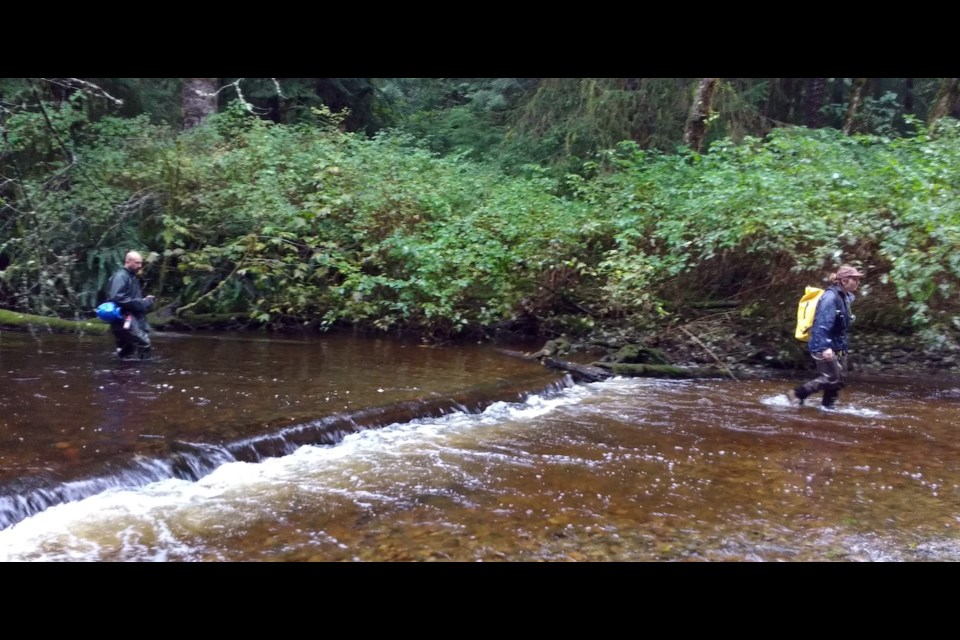Musgamagw Dzawada’enuxw territory (the Broughton archipelago), near Northern Vancouver Island is a stunning and remote area where grizzlies roam, humpbacks are commonplace, and cougars are the chicken-threatening equivalent to minks on Bowen. It is also a place of immense ecological importance to the entire province, because most BC wild salmon must migrate through its narrow straits to reach the major rivers of the province. Unfortunately for the wild salmon and rest of us, it is also a place where disease-spreading open-water Atlantic Salmon farms are plentiful.
I just returned from the first phase of a two-year art project where myself and sound artist Jenni Schine are hosted by the Salmon Coast Field Station (SCFS), a non-profit, independent research station that is renowned for its scientific work on the impacts of aquaculture and sea-lice on Pacific wild salmon. Over the course of the next two years, we will return to the Field Station and follow scientists as they count sea lice on wild salmon and conduct other research. I will use our resulting interviews and experiences to write a documentary graphic novel about humans and salmon.
In this first visit, we joined local ‘Stream Walkers’ who bushwhack through boat-access streams around the archipelago, counting and identifying wild salmon as they return to spawn and die. I consider myself to be pretty good in the bush, but I could barely keep up with MJ Gagnon and Alyssa Ball as they scrambled over slick logs, waded through hip-deep streams, and wove through dense salmonberry thickets. I am in awe of their vast knowledge of the local streams, and their willingness to share their knowledge with me as I tagged along.
Jenni and I proposed this project because we want to call public attention to the plight of wild salmon, which are a keystone species: their disappearance would drastically alter coastal ecosystems. They feed humans, whales, bears, eagles, otters, and they fertilize forests for hundreds of miles inland. They are integral to Indigenous cultures, and to the prosperity and health of all BC citizens. Unfortunately, many policy makers are not rigorously assessing wild salmon health, or the effects of aquaculture and logging on wild salmon.
Over the last two weeks, I was struck by the fact that literally everyone I met in the Broughton were intimate with the tides, mushrooms, fish, and plants that surrounded them. As I return to Bowen, I am forced to face my own ignorance and detachment from Howe Sound ecology. I am humbled by Broughton residents’ dedication to preserve the health of their ecosystem, and realize I could take on much more responsibility towards the land and sea around Bowen.
As Jenni said, Stream Walking is not just a scientific research practice, it is also “taking stock of our neighbours.”
Maybe this is what humans are meant to do: we move within our natural neighbourhood, we monitor, we are stewards. We tell stories about what is happening and we wonder at the mystery around and within us.
Our work will be presented at the Nanaimo Art Gallery in Jan 2018, and at Open Space Gallery in Victoria in 2019. The graphic novel, and a podcast by Jenni, will be released in 2018.



